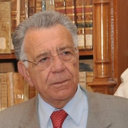Occult leydig cell tumour and androgen-receptor positive breast cancer in a woman with severe hyperandrogenism.
Palavras-chave
Resumo
Leydig cell tumours represent more than 75% of all testosterone-secreting ovarian masses. These benign tumours are frequently occult or very small, but cause dramatic virilization. Chronic hyperandrogenism can also induce systemic complications, which increase morbidity and mortality risk. One of the most obvious effects of increased testosterone levels is polycythemia, a complication which induces dermatologic, osteoarticular and gastrointestinal manifestations and is associated with increased thrombotic risk. However, scientific literature reports few data concerning etiopathogenesis and management of polycythemia in patients with Leydig cell tumours. Moreover, no data are available about the effect of androgen excess on other concomitant tumours expressing androgen receptors. In this paper we report for the first time the case of a woman, with previous infertility, dramatic virilisation and chronic erythrocytosis, who was affected by an occult Leydig cell tumour and an androgen receptor positive breast cancer. This association gives us the opportunity to discuss the role of the steroid receptor expression of breast cancer in the presence of circulating androgen excess. Moreover, we demonstrate for the first time that treatment with flutamide (anti-androgen drug) is able to normalize blood cell count and haematocrit, before of achieving the definitive cure of hyperandrogenism by oophorectomy.


